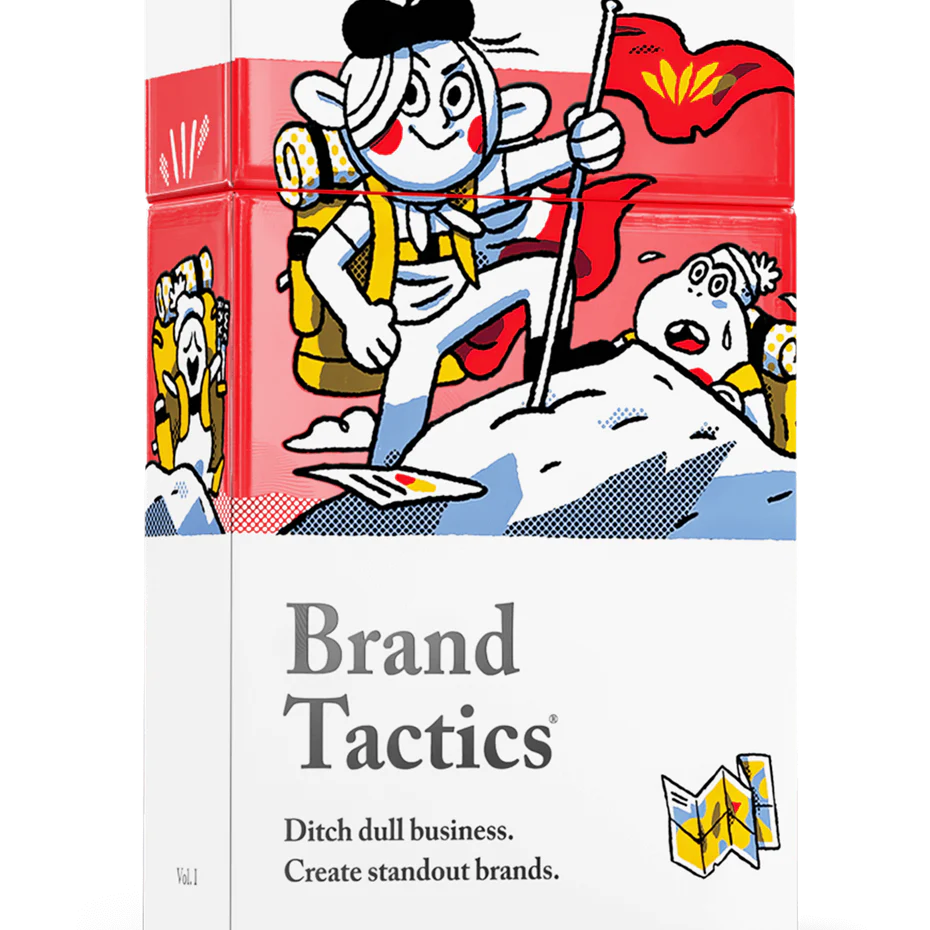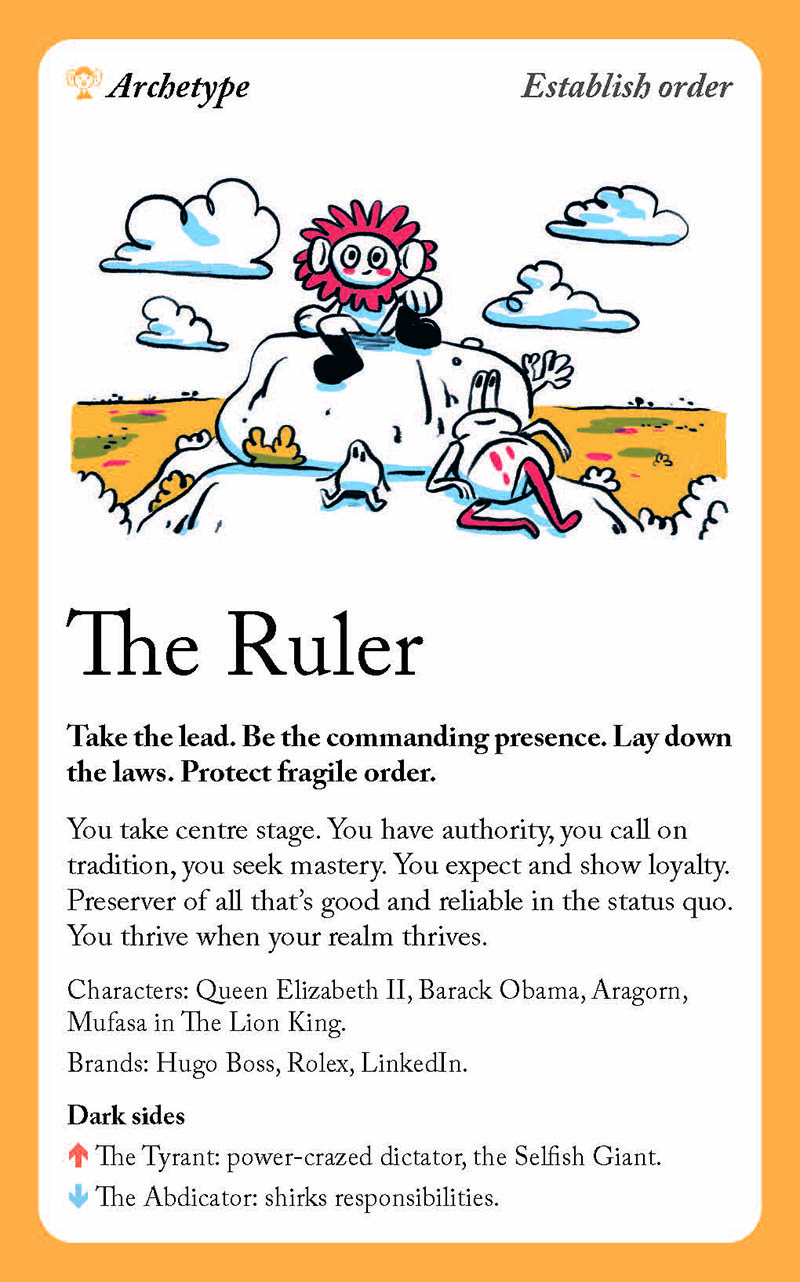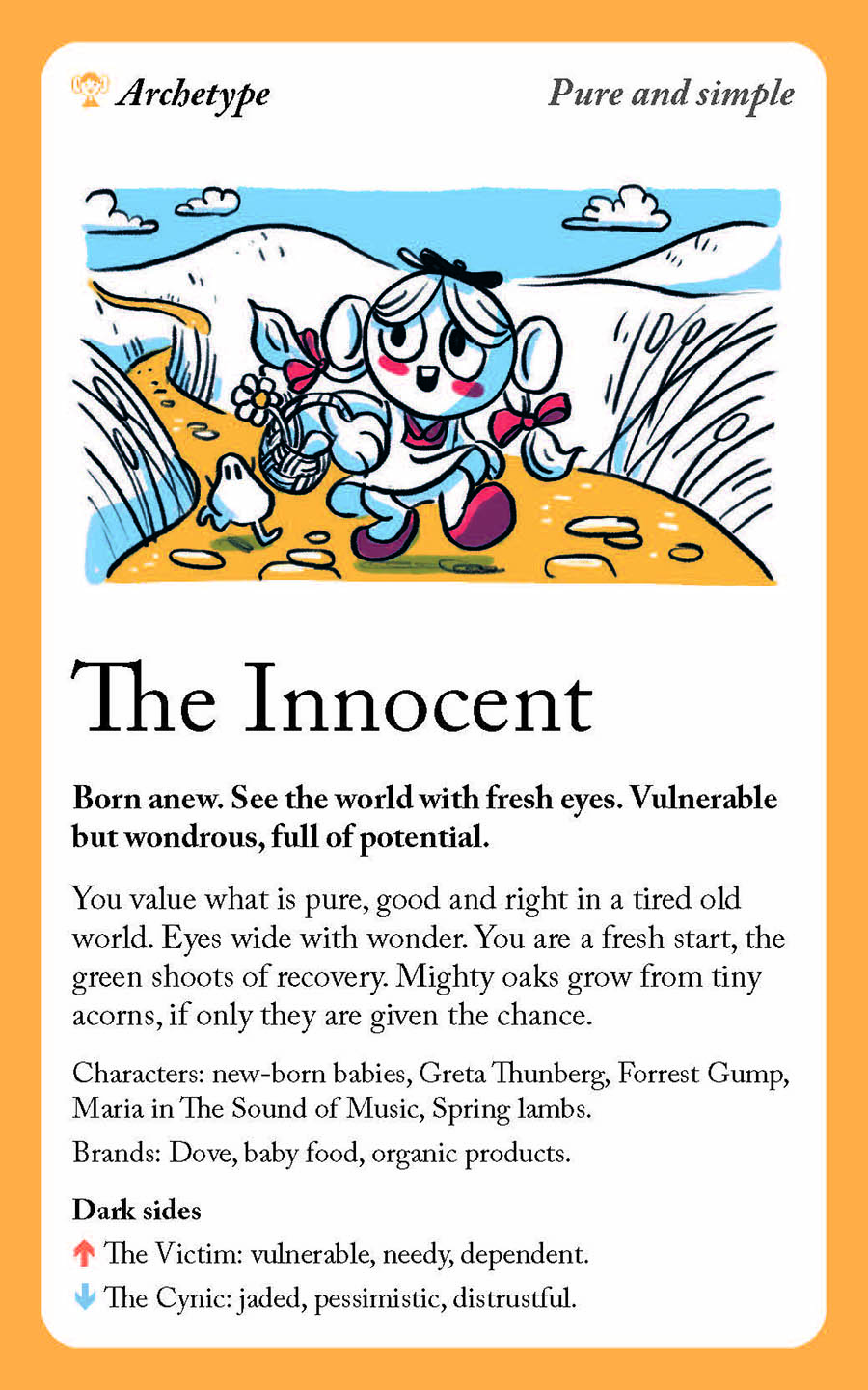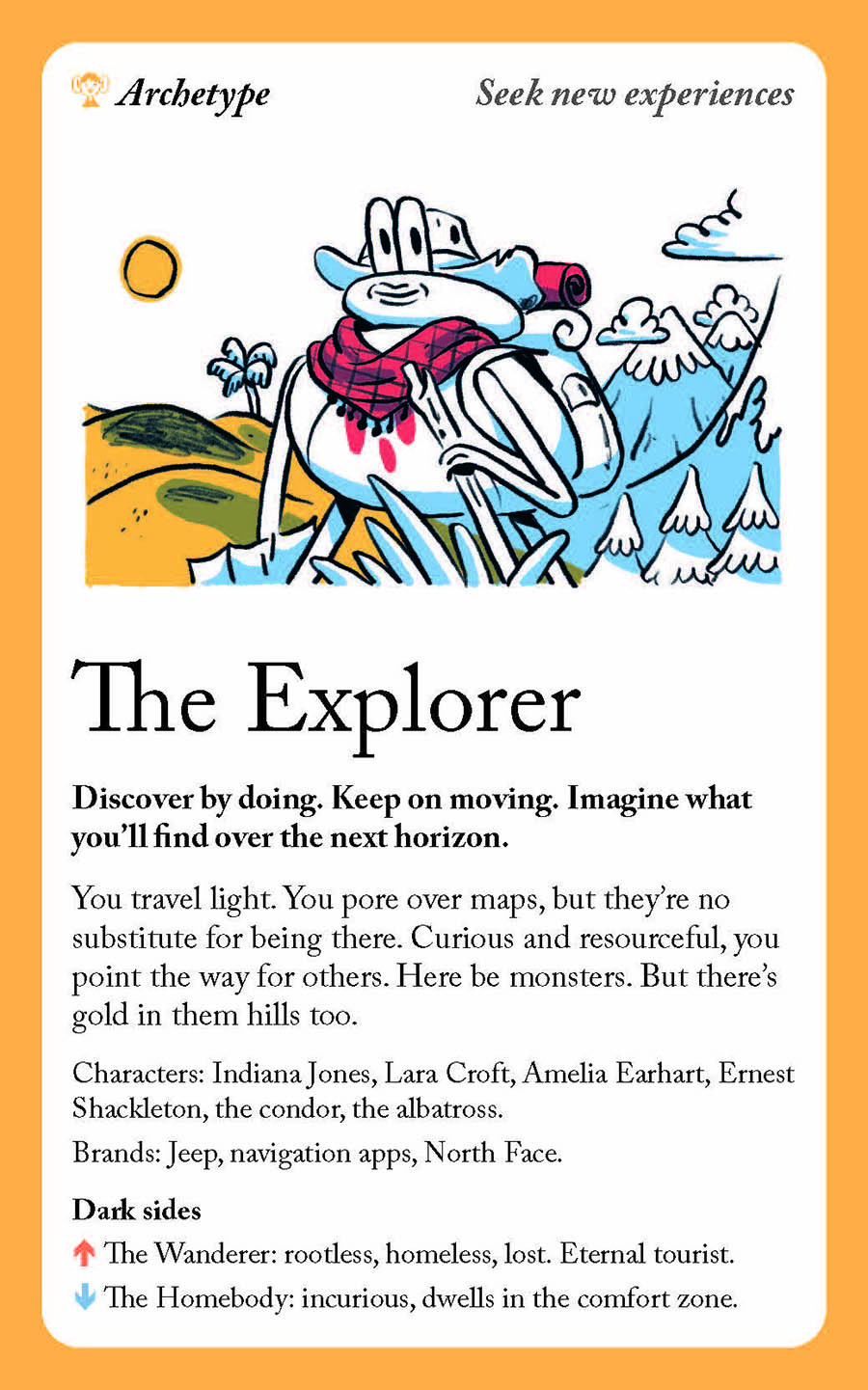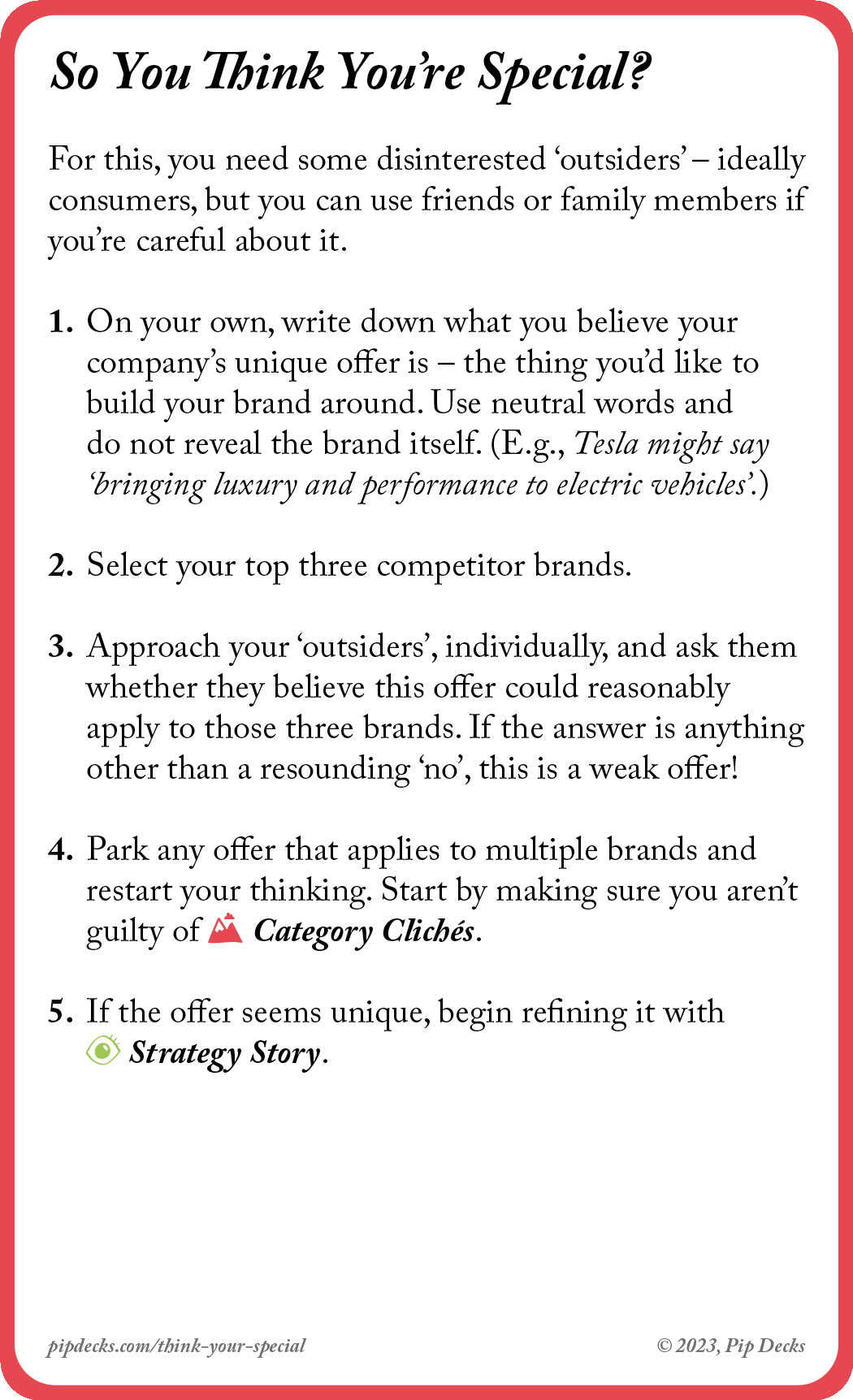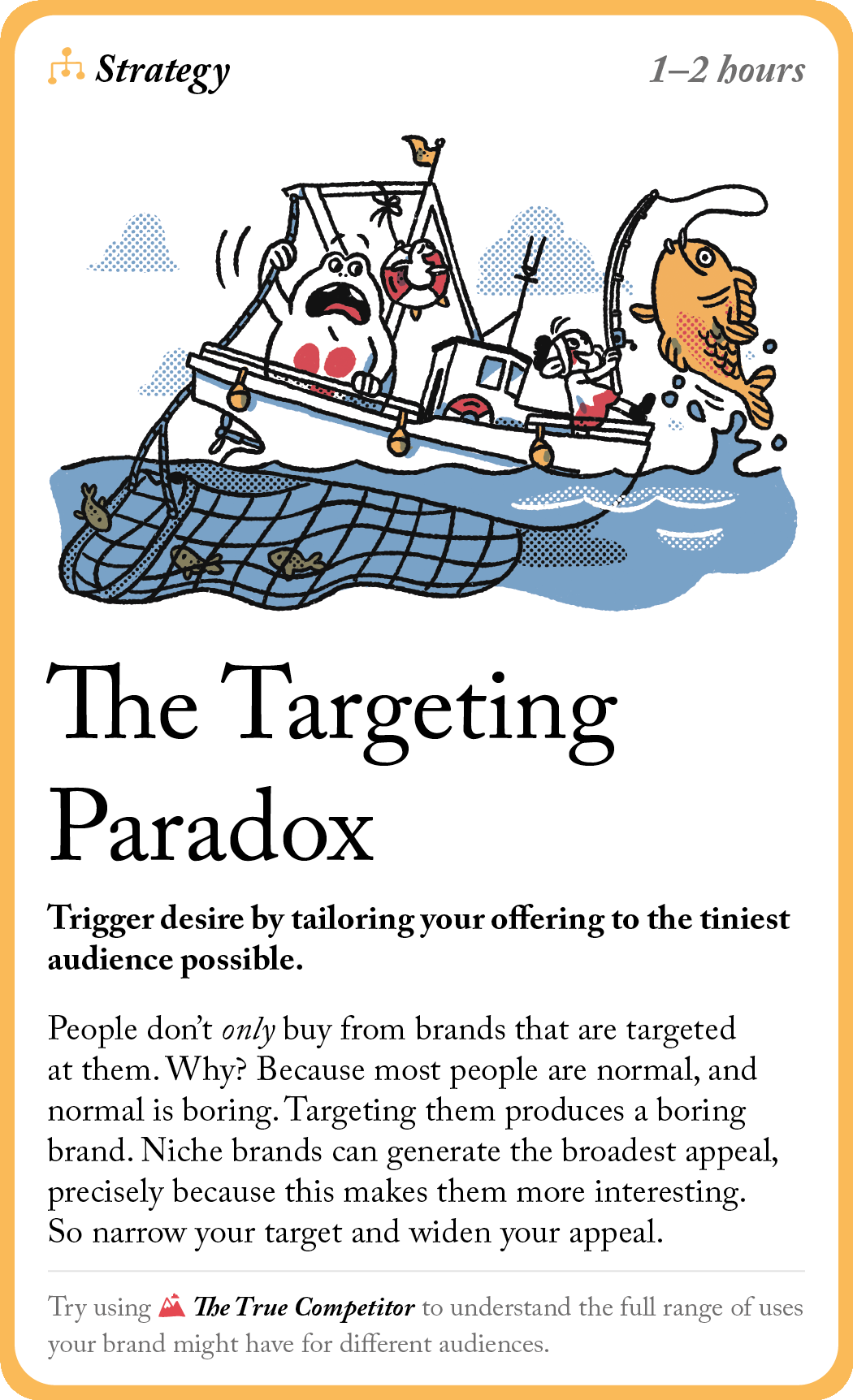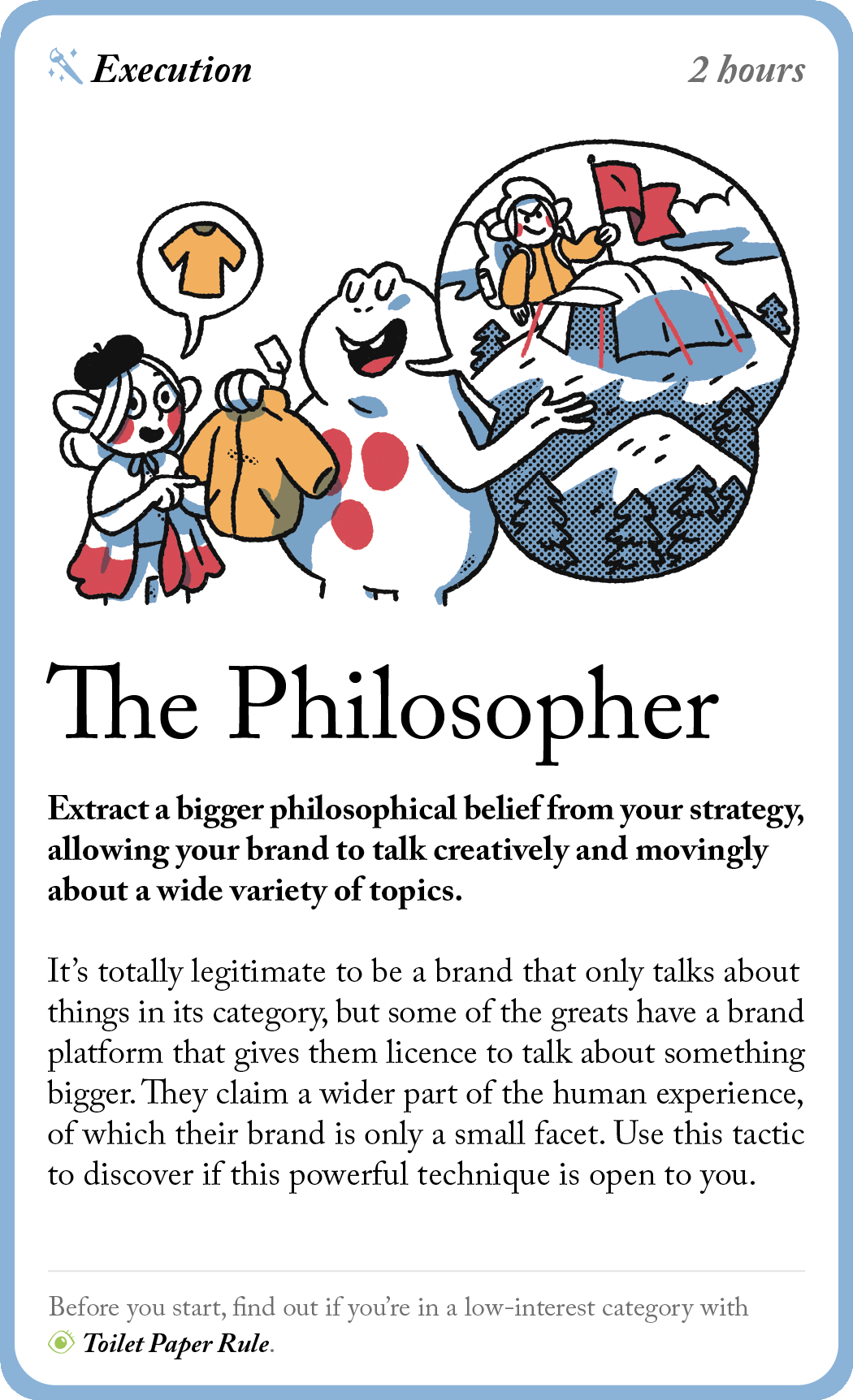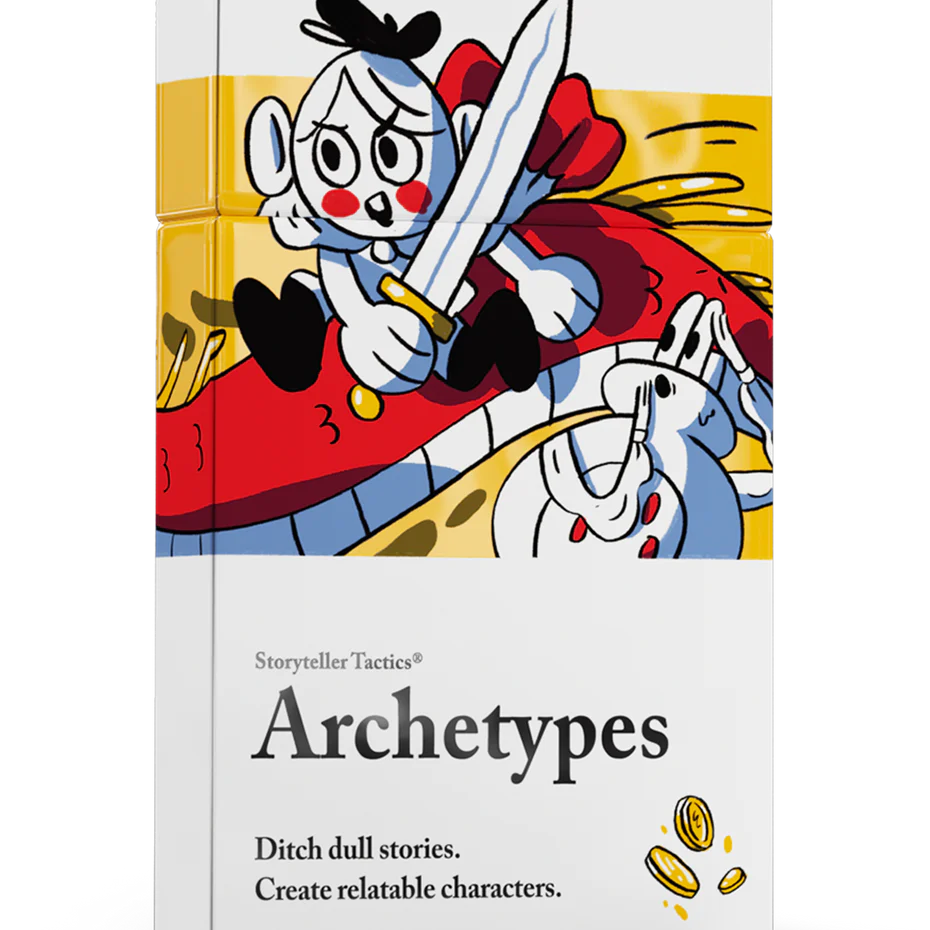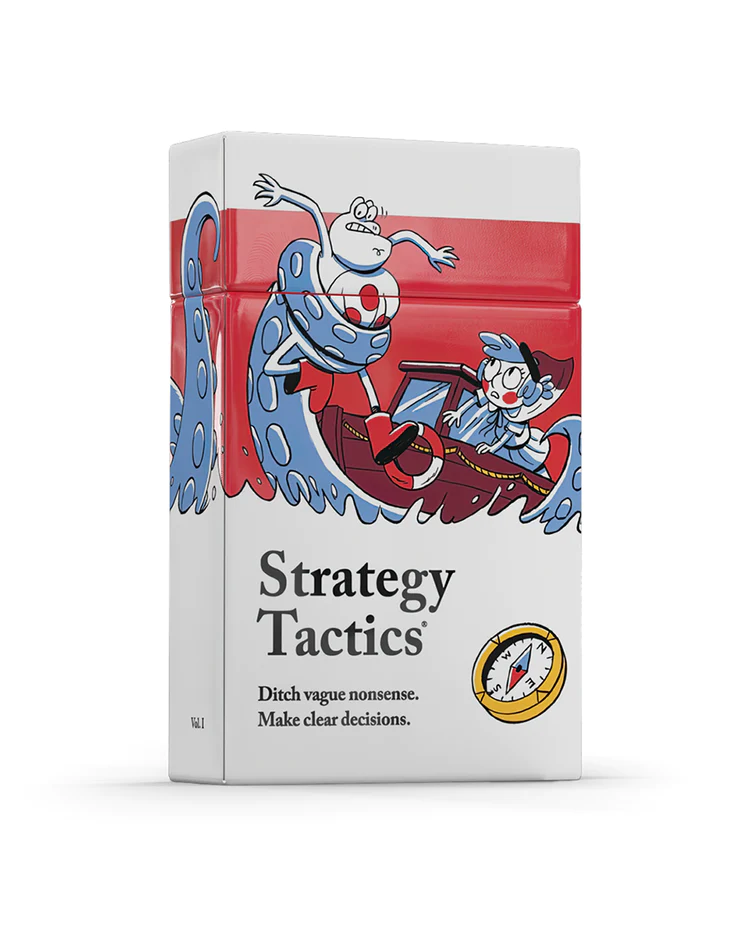Can Archetypes Improve Brand Tactics?
Draw on archetypal motivators and build customer relationships with Brand Tactics. Archetypes can improve brand tactics!
The world is filled with brand gurus evangelizing their latest branding ideology, but few and far between are real tools for rolling up your sleeves and doing the hard work of building a brand. The Pip Decks Brand Tactics deck is an outlier in this field, providing actionable steps to unpack the way your products, services, and ideas are perceived. The Brand tactics deck empowers you to shape the direction of your organization based on a coherent approach to branding.
The new Archetypes deck, released in early 2024, provides a powerful adjunct to the work of understanding people’s reactions and motivations to your offer and messaging. When you mix the new Archetypes deck with the Brand Tactics deck, you gain a new way of evaluating how a variety of personality types and underlying drivers result in unique responses to your brand.
Use our affiliate link to get your Brand Tactics deck with 15% off your entire purchase from the Pip Decks website.
David Altschul, founder of Character, a brand development company, starts from the position of “character.” If asked to summarize the approach I learned from David, I would say, “business for decades conducted itself based on strategies drawn from war – claiming territory, market domination, acquisition… but there’s another approach – relationship. Relationships are longer lasting, and they are based on the character and characteristics of your organization. The best way to convey your character is through brand.”
But how do we build brand character?
The Brand Tactics deck provides an actionable methodology working from reflection and introspection, two self-discovery phases of brand development, to execution of brand strategies and doubling down. Archetypes add an additional character-driving refinement to the process of developing a brand. By understanding the motivators of your audience and the motivations of your brand, you can understand the relationship. Like friends often complement one another, so do brands and their loyal fans.
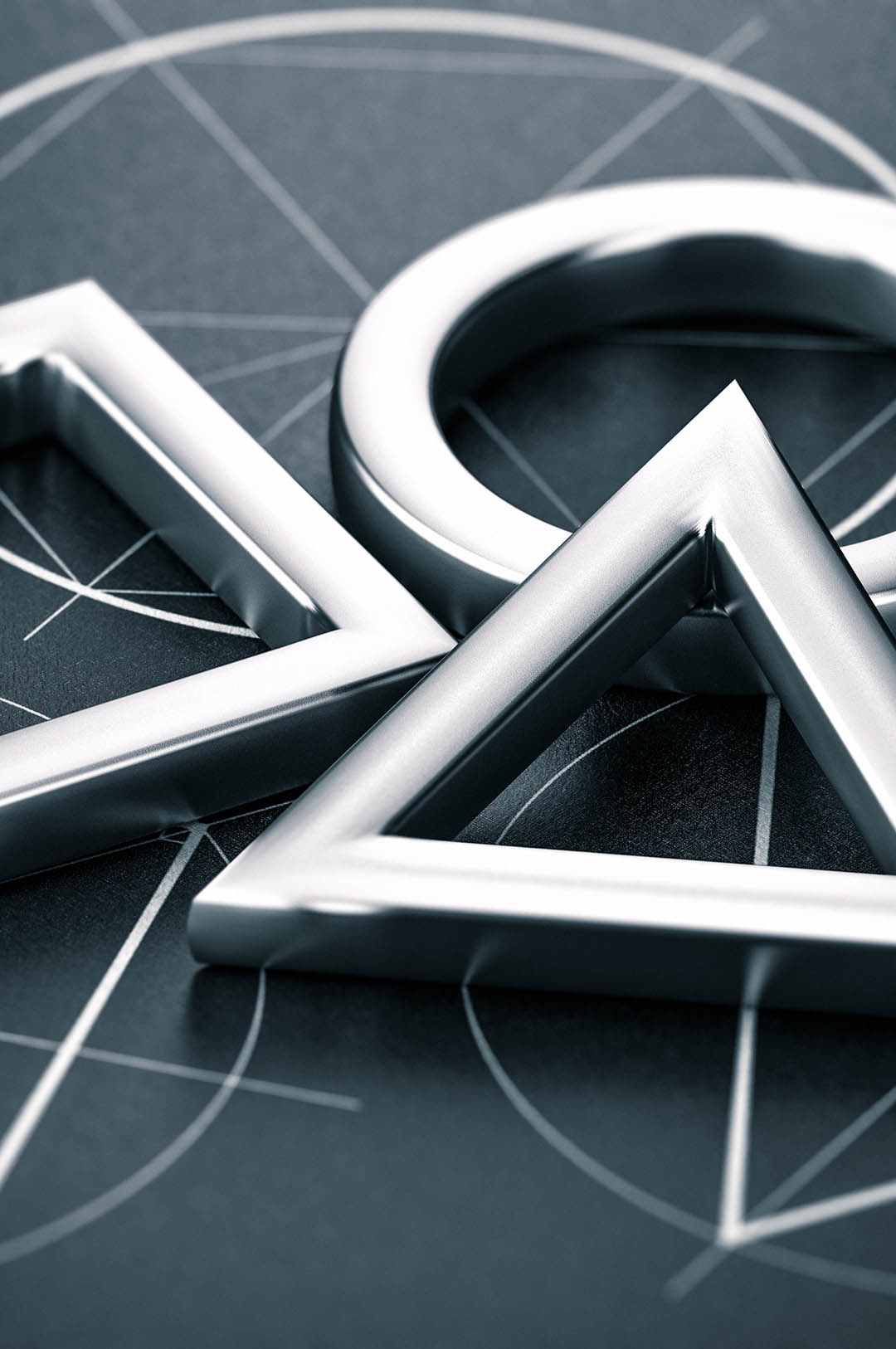
What are archetypes and can archetypes improve brand tactics?
Join Pip Decks author Steve Rawling and Murdock Media Production Founder Alan Murdock exploring character development using the Pip Decks Storyteller Archetype cards.
Where did Archetypes come from and how can archetypes improve brand tactics?
Archetypes came from psychology. Carl Jung was looking for shared traits across people that could help people contextualize their lives and understand their motivations and drives. Jung’s approach has been criticized as too simplistic in many cases. For that reason, we apply archetypes loosely in order to allow individual and cultural traits to rise to the top. Archetypes provide a framing convention, and we can use Brand Tactics and Archetypes together as a way to discover and invent archetypes that describe the actual people involved.
The foundational twelve archetypes emerge from human drives—creativity, leadership, support, and cameraderie, among others. The archetypes can be seen as shaping the behaviors people express.
By using archetypes in conjunction with brand tactics, we can examine how individuals with an array of motivators may respond to our branding work.
Let’s examine a few Brand Tactics to see how archetypes can help

So you think you are special.
Let’s divert a little bit from this process. Yes, let’s interview people, but let’s also ask them some questions to understand their archetypes. rank your brand and competitors in relation to the archetypes. What’s the profile of an “outsider” vs true fan? And what’s this “You” that you think is so special?
- Rank your customers, your competitor’s customers, and industry outsiders in relation to the archetypes. Maybe you serve different emotional and psychological needs.
Specialty resides in the eye of the beholder, and sometimes the “something special” you are looking for is in the relationship between your archetypal traits and theirs.
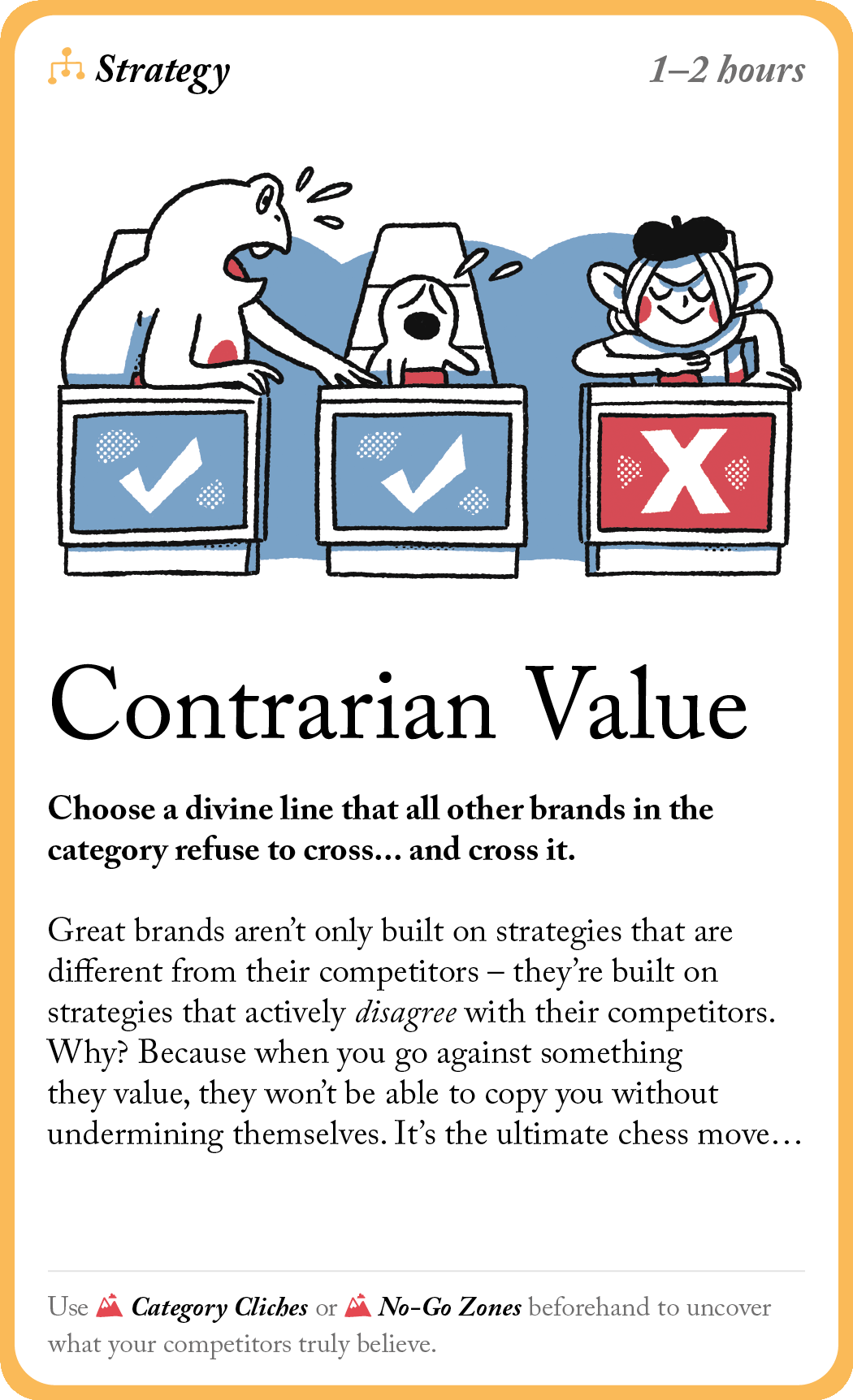
Contrarian Value
Let’s use Archetypes to unpack “Contrarian Value” and go a different way.
What do your competitor’s customers care about?
- Rank your competitor’s customer in relation to each archetype.
- What archetypes are opposite of or adjacent to their customers, and
- what do people that fit those archetypes want?
For example, punks that wear military boots aren’t in it for comfort, or for tactical capability, but most often for a symbol of rebellion against “suits” and doing everyday business the normal way. It’s rather ironic, don’t you think?
In this case, the “disagreement” we bring about as contrarian isn’t about better creativity or innovation, but in stepping backward and away from the norm.
“Secret” contrarianism
Let’s take another example. An alternate contrarian approach to “business as usual” could be the archetype of the innocent – choosing nievete in the face of logic and algorithms. Maybe local, urban farming in the face of industrial agriculture.
When we start to map the archetypes of primary users, we can start to see ways to be contrarian without necessarily looking “contrarian.”
Targeting paradox
Many companies set out to be a “niche” product, but then every customer that asks for a modification gets one. That’s not actually a niche strategy. It’s a customization strategy, and companies can die on the cost of customization alone. A true niche is when you’ve designed something that everyone in the niche agrees is the right thing for the job.
To understand drives of your niche, it helps to start with a solid understanding of the community through direct interactions. But once you begin to assess the group to understand root motivations, Archetypes are quite helpful.
- Start with all of the archetypes laid out and consider them in relation to your category.
- Cast out archetypes until you have narrowed down to one.
- It doesn’t have to be an archetype in the set. It can be a blended archetype that is deeply passionate about a single thing.
The Philosopher
The goal of the philosopher card is to not necessarily expand your customer focus, but to expand your purpose – to make your purpose iconic and universal. expand the reach of your brand to more archetypes by building a universal draw. Test the universal draw against your archetypes.
- Follow the steps on the back of The Philosopher card to identify a universal draw.
- Match the archetypal traits of the universal draw to the characteristic “essence” of your brand.
- evaluate consumer profile archetypes in terms of how they relate to the universal archetype of your brand.
A case for philosophizing
Let’s say we are a knife manufacturer and we did deep research into the knifelike needs of soldiers in combat. Size, sharpness, weight, stamina against rain, dust, and sand. Types of materials that need to be cut. We evaluated across scissors, knifes, utility tools and the like. Now we have the perfect combat knife, but it could be useful for camping and outdoorsmanship as well.
Fans of the wild have some crossover with soldiers, but also differences. Ruggedness and resilience might be the unifying universal that we can point to in this category.
Now, how can ruggedness and resilience become a brand character? Use the archetypes deck to fashion an archetypal character for your brand.
In Conclusion: Archetypes do improve brand tactics!
Archetypes help us in contexts like branding because we want to know what motivates people. Why do people go into a coliseum and root for a team? Why do people go on a secluded meditation retreat? When we can understand the root motivators we develop a better understanding of our essence and that of our audience.
In fact, sometimes the sports fan goes on a retreat. Other times, the spiritual seeker goes to a packed venue. Why do these people step out of their ordinary role to experience something different? Often, it’s because each archetype is part of every person, just in varying amounts. When we can offer a deeply aligned experience that fulfills the drives represented in the archetypes, we can deliver real value to people when they are seeking out that experience.
Archetypes for brand development
Want to learn brand development?
In addition, increase your ability to create brand platforms and brand communications frameworks by taking my class: Brand Building to Create a Big Impact.
Stay Connected with Murdock Media Production!
If you like this content, subscribe to our YouTube channel for more on story archetypes, brand storytelling, and brand development.
And drop me a line with the form below to let me know how your brand building is going. I look forward to seeing how you discover your brand and go with your audience on your own unique journey.

